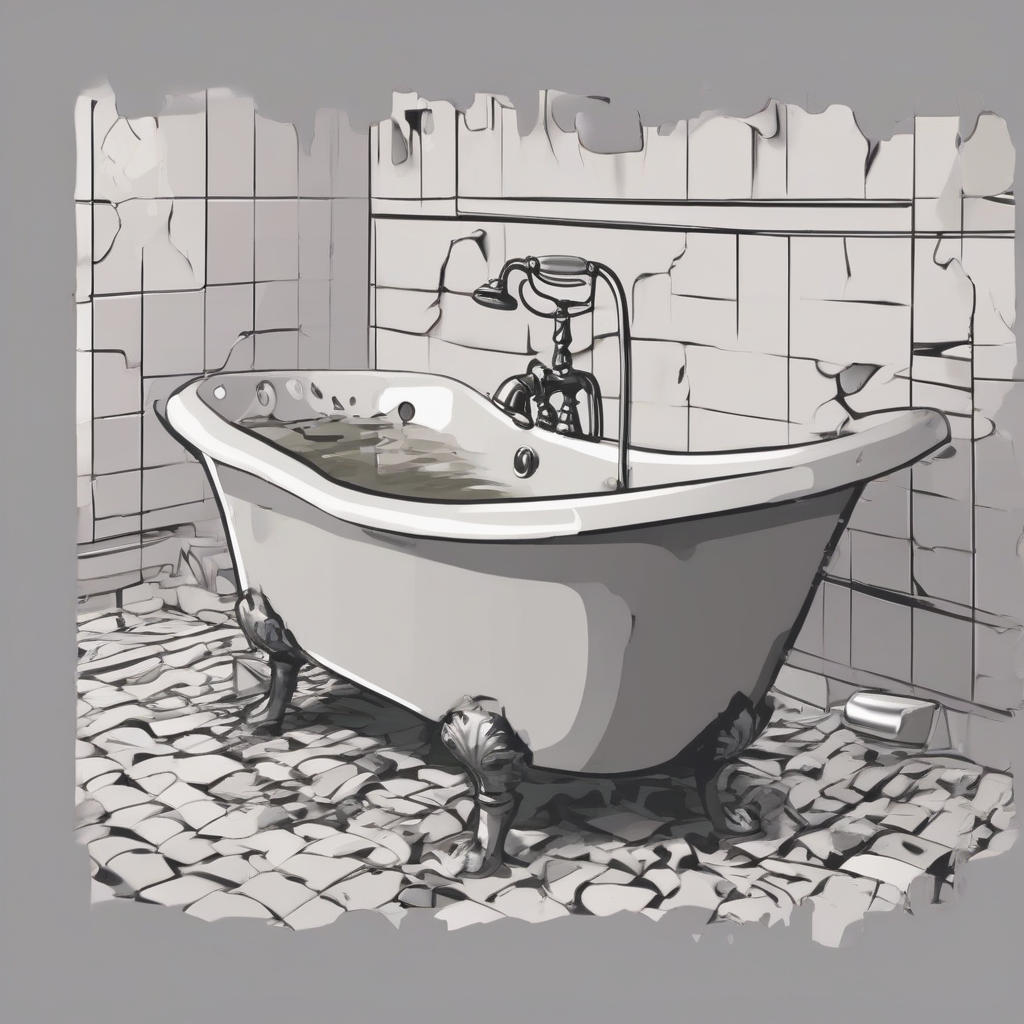The Ultimate Guide to Fixing a Broken Bathtub Faucet: From Diagnosis to Repair

The Ultimate Guide to Fixing a Broken Bathtub Faucet: From Diagnosis to Repair
A broken bathtub faucet can be a frustrating and inconvenient problem. It can leak, drip, or even stop working altogether, making it difficult to take a bath or shower. But don't despair! With the right knowledge and tools, you can fix your bathtub faucet yourself and save yourself a lot of money. This comprehensive guide will walk you through everything you need to know, from diagnosing the problem to completing the repair.
Understanding Bathtub Faucet Types and Mechanisms
To effectively address a broken bathtub faucet, it's essential to understand the different types and mechanisms that can cause problems. Here's a breakdown:
- Compression Faucets: These classic faucets feature separate hot and cold handles that turn to control water flow. They utilize compression washers to seal water flow.
- Cartridge Faucets: These modern faucets feature a single handle that controls both temperature and flow. They use a cartridge containing a ceramic disc to control water flow.
- Ball Faucets: These faucets use a ball-shaped valve to control water flow. They are known for their smooth operation and easy maintenance.
- Single-Handle Faucets: These faucets typically have a single lever for controlling both hot and cold water. They can be cartridge, ball, or disc-based.
Common Bathtub Faucet Problems and Their Causes
Here are some of the most common issues you may encounter with your bathtub faucet:
- Leaking Faucet:
- Worn-out washers or O-rings: These seals can wear out over time, causing leaks.
- Loose packing nut: This nut holds the stem in place, and if it's loose, water can leak around it.
- Damaged stem: A cracked or worn-out stem can cause leaks.
- Clogged aerator: A clogged aerator can restrict water flow and cause leaks.
- Dripping Faucet:
- Worn-out washer or O-ring: These seals can wear out, causing drips.
- Loose packing nut: This can cause a slow drip.
- Clogged aerator: A clogged aerator can also cause dripping.
- Faucet Not Working:
- Broken stem: A broken stem can prevent the faucet from turning or controlling water flow.
- Clogged cartridge or ball valve: Debris can clog these mechanisms, preventing water flow.
- Frozen valves: If the valves are frozen due to mineral buildup, they won't operate correctly.
Diagnosing the Problem: A Step-by-Step Guide
Before you start repairing your bathtub faucet, it's crucial to pinpoint the exact problem. Here's a step-by-step guide:
- Turn off the water supply: Locate the shut-off valve for your bathtub and turn it off. This is usually found beneath the sink or on the wall behind the faucet.
- Inspect the faucet: Look for any visible signs of damage, wear, or leaks. Pay attention to the handles, spout, and the area around the faucet base.
- Check for leaks: Turn on the water supply briefly and observe where the water is leaking from. This will help you determine the source of the problem.
- Test the faucet: Try turning the handles or lever to see if they operate smoothly. If they're stiff or don't turn, there might be a mechanical issue.
Repairing Your Bathtub Faucet: A Comprehensive Guide
Once you've diagnosed the problem, you can start repairing your bathtub faucet. Here's a detailed guide for common repairs:
Replacing a Worn-out Washer or O-ring
- Turn off the water supply: Shut off the water valve to your bathtub.
- Remove the handle: Unscrew the handle from the faucet using a screwdriver or wrench, depending on the type of faucet.
- Remove the stem: Using a wrench, remove the stem from the faucet body. The stem holds the washer or O-ring.
- Replace the washer or O-ring: Replace the old washer or O-ring with a new one of the correct size and type.
- Reassemble the faucet: Reinstall the stem, handle, and any decorative caps or escutcheons.
- Turn on the water supply: Slowly turn the water supply back on and check for leaks.
Tightening the Packing Nut
- Turn off the water supply: Shut off the water valve to your bathtub.
- Remove the handle: Unscrew the handle from the faucet.
- Tighten the packing nut: Using a wrench, tighten the packing nut located at the base of the stem. Be careful not to overtighten it, as this could damage the stem.
- Reassemble the faucet: Reinstall the handle and any decorative caps or escutcheons.
- Turn on the water supply: Slowly turn the water supply back on and check for leaks.
Replacing a Cartridge
- Turn off the water supply: Shut off the water valve to your bathtub.
- Remove the handle: Unscrew the handle from the faucet using a screwdriver or wrench.
- Remove the cartridge: The cartridge is typically held in place by a retaining clip or screw. Once you remove it, gently pull the cartridge out of the faucet body.
- Install the new cartridge: Carefully insert the new cartridge into the faucet body, ensuring it's properly seated.
- Reassemble the faucet: Reinstall the handle and any decorative caps or escutcheons.
- Turn on the water supply: Slowly turn the water supply back on and check for leaks.
Replacing a Ball Valve
- Turn off the water supply: Shut off the water valve to your bathtub.
- Remove the handle: Unscrew the handle from the faucet.
- Remove the ball valve: There will be a retaining clip or screw holding the ball valve in place. Once removed, pull the ball valve out of the faucet body.
- Install the new ball valve: Insert the new ball valve into the faucet body, ensuring it's properly seated.
- Reassemble the faucet: Reinstall the handle and any decorative caps or escutcheons.
- Turn on the water supply: Slowly turn the water supply back on and check for leaks.
Cleaning a Clogged Aerator
- Turn off the water supply: Shut off the water valve to your bathtub.
- Remove the aerator: Unscrew the aerator from the end of the faucet spout.
- Clean the aerator: Use a small brush or a toothpick to remove any debris or mineral buildup from the aerator.
- Reinstall the aerator: Screw the aerator back onto the faucet spout.
- Turn on the water supply: Slowly turn the water supply back on and check if the water flow is restored.
Safety Precautions:
- Turn off the water supply: Always shut off the water valve to your bathtub before working on the faucet.
- Use appropriate tools: Make sure you have the right tools for the job, and use them carefully.
- Be careful with sharp objects: When working with tools, always use caution to avoid cuts or injuries.
- Avoid overtightening parts: Overtightening can damage parts and cause leaks.
- Consult a professional if necessary: If you're not comfortable performing the repair yourself or if the problem is complex, consult a qualified plumber.
What's Your Reaction?

















